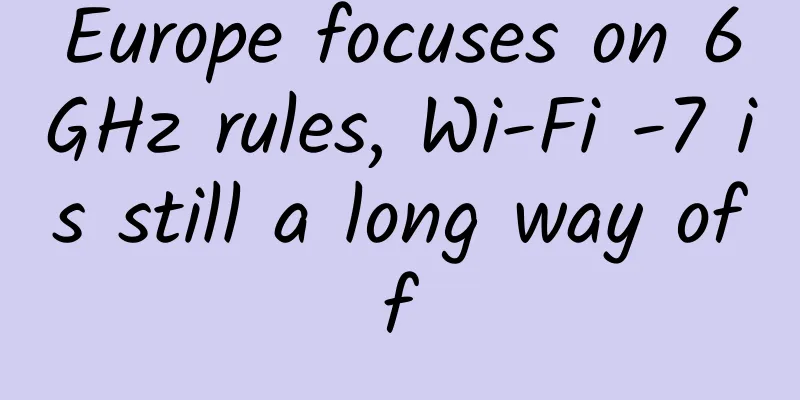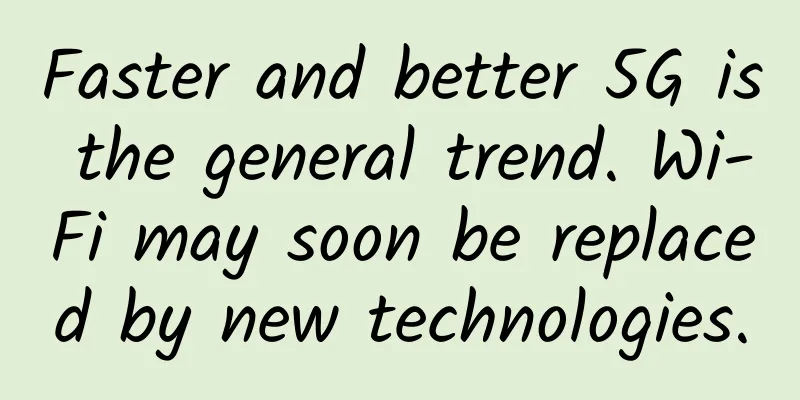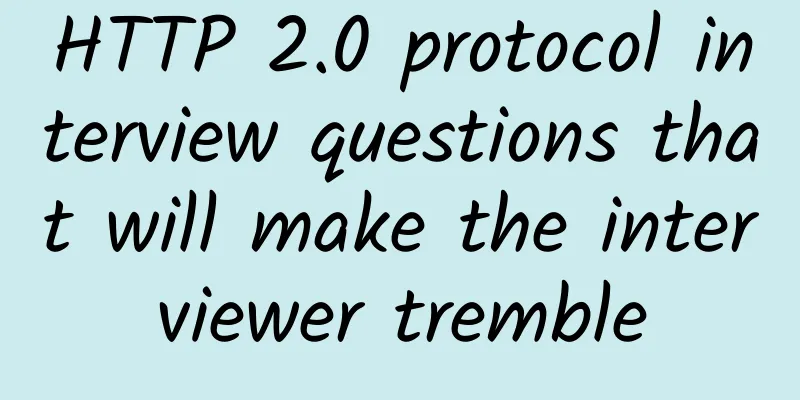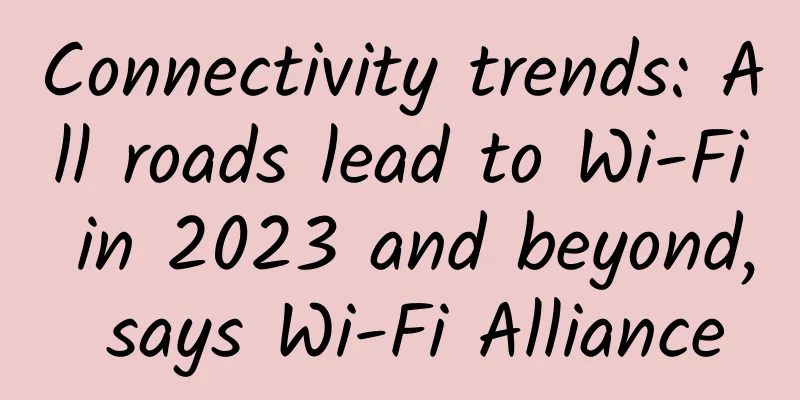Europe focuses on 6GHz rules, Wi-Fi -7 is still a long way off

|
European regulators have been facing increasing pressure over the slow pace of deployment of the lower 6 GHz spectrum required for Wi-Fi 6E in the region. Meanwhile, standard setters on the IEEE 802.1 committee have made progress in finalizing specifications for the next phase of wireless LANs. A working group recently released detailed technical standards for 802.11be, but it is widely expected that when the technology becomes a reality it will be designated Wi-Fi 7. To meet growing connectivity demands and ensure the sector uses spectrum more efficiently, technology experts and standards developers working to define 802.11be [or Extremely High Throughput (EHT)] have set ambitious goals. The development standards goals will include: higher data rates, lower latency, better power (and cost) efficiency, better interference mitigation, and higher capacity density - achieving all of these incremental improvements seems a bit difficult. In order to meet the mid-2024 target set by the 802.11 be amendment committee, Wi-Fi Alliance certification and interoperability testing will begin at the end of the year. Of course, as with previous WLAN versions, pre-certified end-user devices will likely appear before the end of 2024, just as they are now with Wi-Fi 6 and the next-generation Wi-Fi 6E. We need to ensure backward compatibility with previous generations of WLAN to allow a smooth transition to the next generation. The 802.11be standard (previously known as Wi-Fi 7) will still be based on OFDMA, but some key advances are expected to allow the deployment of 4096-QAM. MU-MIMO (Multi-User Multiple Input Multiple Output) needs to be further improved with the aim of supporting 16 spatial streams as defined, which is double the number used in Wi-Fi 6. This is expected to increase throughput by 20%, while lower modulation schemes will continue to be supported. Implementing this feature may be Wi-Fi 7's biggest design challenge, its developers say. Wi-Fi 7's maximum channel size is 320MHz, also double that of Wi-Fi 6. Wi-Fi 7 is expected to be deployed in the 6GHz band, the newest portion of the spectrum added for unlicensed use, and supported by Wi-Fi 6E. If the maximum channel is doubled, Wi-Fi 7's throughput will also double. In addition, the specification will also support 160+160MHz, 240+180MHz, and 160+80MHz channels to merge non-adjacent spectrum blocks. Wi-Fi 7 will also enforce multi-link operation. This will allow devices to receive or transmit data simultaneously over different channels or bands. This will enable Wi-Fi 7 to significantly increase throughput to multiple devices and reduce latency, providing greater reliability. This promises a much higher maximum data rate of up to a theoretical 46 Gbps. More realistic data rates expected by the developers would bring this down to around 30 Gbps, which would allow it to be shared among multiple devices. By the time all of this is commercialized, the 6 GHz band will already be widely used for other wireless services, including 5G cellular networks. It is expected that the automatic frequency coordinator (AFC) being developed will be the solution to this problem, ensuring efficient spectrum sharing. Monica Paolini, founder of networking consultancy Senza Fili, said in a technical brief that "Wi-Fi 7 brings more flexibility and capabilities to the enterprise" by extending the range of wireless LANs. He stressed that the two network technologies need to work together to "introduce edge computing, distributed and cloud architectures, virtualization and digitization in emerging private wireless networks." Paolini noted that Wi-Fi 7 will also play an important role in supporting applications that require deterministic latency, high reliability and improved QoS. As for the impact on the enterprise, improved Wi-Fi will also provide greater opportunities for IoT and IIoT applications such as industrial automation, surveillance, remote control, AV/VR and other video-based applications. Paolini also organized and moderated a webinar, in partnership with the Wi-Fi Alliance, focusing on progress in Wi-Fi spectrum allocations in Europe. Andreas Geiss, head of the European Commission's GD CONNECT wireless spectrum policy unit and "special guest" at the webinar, noted that the process is "very complex" because the discussions involve not only the 27 countries of the EU, but also the other 48 countries within CEPT (European Conference of Posts and Telecommunications, the regulator that represents all European countries on all matters related to telecommunications). Geiss revealed that European regulators plan to release 500 MHz (5945 MHz to 6425 MHz) for Wi-Fi use in April 2021. “We hope to finalize our proposals by the end of November.” After that, the proposals “will need to be studied by other coordination bodies, including the important European Radio Spectrum Committee (RSC). According to Geiss, CEPT's Electronic Communications Committee (ECC) is expected to approve the working group's draft proposals on 6GHz management soon. These proposals will then be submitted to the European Commission for approval by all EU national organizations and for comments from expert groups such as the RSC. One of the most contentious issues in the ECC discussions obviously concerns the protection of the so-called CBTC (Communications Based Train Control) signalling rules used by many European train operators. This issue is expected to adopt the coordinated Low Power Indoor (LPI) and Very Low Power (VLP) versions of the 6GHz specification. The difference between the two types of equipment lies in transmission capacity and portability. LPI devices will only be allowed to be deployed inside buildings and have a bandwidth of 480 MHz, while VLP devices will be allowed to be used both indoors and outdoors. The spectrum will be divided into two categories: 400 MHz and 80 MHz. It is expected that most installations will take place under the LPI umbrella, while the newly designed VLP version will focus on consumer applications such as VR/AR glasses and other applications that can be connected to smartphones. When will the upper half of the 6 GHz band be available for use? Geiss: “We are open to further research, but we need more studies in this area, especially around issues of interference with connectivity – especially with 5G operations.” “Sharing spectrum in the right way is one of the key issues in achieving Europe’s ‘Gigabit Society’ goal,” Geiss said. “But at the moment, member states want to focus on making sure they can make full use of the lower 6GHz band and that there are no emissions reduction issues.” |
<<: In 2020, China accounted for more than 85% of the world's 5G connections
Recommend
Cyber attacks are powerful, and Microsoft was hit! Five reflections on corporate risk control!
Author | Chen Jun Planning | Yun Zhao On March 22...
Private operators, which were not optimistic in the past, are starting to make progress in the 5G era
Why are the three major operators called the thre...
Ministry of Industry and Information Technology: We must seize the opportunities of global 5G and industrial Internet
On February 1, the Ministry of Industry and Infor...
MIIT News: my country to add 580,000 5G base stations this year
On December 24, at a press conference held by the...
What is the difference between artificial intelligence and machine learning?
【51CTO.com Quick Translation】 Artificial intellig...
A brief discussion on the prospects for the evolution of 5G core network
I recently read a paper about 5G core network, &q...
Learn about MQTT protocol in one article
Today we will talk about the MQTT protocol in det...
China Mobile and industry partners jointly released the "Indoor Positioning White Paper"
On the morning of June 19, China Mobile, together...
It has been difficult for virtual operators to become legal operators in three years, and telecommunications fraud has become a stumbling block
[[180649]] The long-delayed official mobile resal...
Donghua's anti-unified prescription system helps hospitals develop an "indestructible body"
Recently, a piece of news that "Apple China ...
Wind River Wins Two Awards at 2017 SDN/NFV World Summit
At the 2017 SDN/NFV World Summit hosted by Layer1...
2018 China Enterprise Digital Transformation Seminar was held, Ruijie helped enterprises break through digital transformation
On August 24, the 2018 China Enterprise Digital T...
It turns out that you can understand the next generation of Wi-Fi in such an easy-to-understand way
Each new Wi-Fi version brings new features and it...
What to do if the Wi-Fi signal at home is not good? Here are 4 tips
Everyone needs Wi-Fi at home, but for various rea...
20 pictures to thoroughly understand the principles of HTTPS!
[[355627]] Preface In recent years, major compani...









